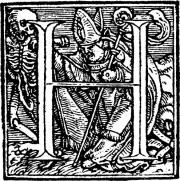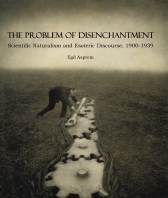 The blog has been silent for a while as I have been busy with finishing up classes and managing upcoming deadlines, among other things. To get going again, I’ll take this opportunity to write about a book presentation I went to last week. The specialist of gnosticism, hermetism and early Christianity, Roelof van den Broek, presented his latest book, Gnosis in de Oudheid: Nag Hammadi in Context in the magnificent Huis met de Hoofden (“house with the heads”) in Amsterdam. Below follows a few words about the book, the house, and the occasion.
The blog has been silent for a while as I have been busy with finishing up classes and managing upcoming deadlines, among other things. To get going again, I’ll take this opportunity to write about a book presentation I went to last week. The specialist of gnosticism, hermetism and early Christianity, Roelof van den Broek, presented his latest book, Gnosis in de Oudheid: Nag Hammadi in Context in the magnificent Huis met de Hoofden (“house with the heads”) in Amsterdam. Below follows a few words about the book, the house, and the occasion.
The Huis met de Hoofden is a large canal house from the 17th century (1622 to be exact), and one of the Netherlands’ top 100 UNESCO monuments. Its name is derived from the six heads facing the canal on the front, depicting (or so it is believed) Apollo, Mars, Ceres, Minerva, Bacchus, and Diana. One of the house’s early users was the Czech scholar Jan Amos Comenius, famous for planning his educational reforms.
In 2007 this magnificent building was officially transferred, by then mayor of Amsterdam, Job Cohen, to Joost Ritman and the Bibliotheca Philosophica Hermetica. The BPH, one of the largest collections in the world of documents relating to Rosicrucianism, alchemy, hermeticism and related currents, will eventually move to this location.
 Getting back to the occasion: The BPH has its own publishing house, In de Pelikaan, which now publishes van den Broek’s new work on Gnosticism in antiquity. In that occasion, it was decided to throw a festive book presentation, with speeches and lectures by among others van den Broek and Joost Ritman himself. Also present was the bulk of members of the GHF, witnessing the centre’s financial founder and benefactor being presented with the first copy of van den Broeks book.
Getting back to the occasion: The BPH has its own publishing house, In de Pelikaan, which now publishes van den Broek’s new work on Gnosticism in antiquity. In that occasion, it was decided to throw a festive book presentation, with speeches and lectures by among others van den Broek and Joost Ritman himself. Also present was the bulk of members of the GHF, witnessing the centre’s financial founder and benefactor being presented with the first copy of van den Broeks book.
So, enough said of that – it was a nice gathering of the BPH and GHF milieus, in wonderful historical surroundings. But what about the book?
Gnosis in de Oudheid is, surprisingly, the first book to take a full effort to place the religious texts that were found in Nag Hammadi in upper Egypt in 1945 in proper context. These were texts that challenged our conception of early Christianity, and open up a host of questions regarding the influence of different intellectual and religious currents in late antiquity. Particularly it gave insight into the actual beliefs and teachings of the various “gnostic” sects, which had before mostly been known through the polemical attacks of the Church fathers.
Van den Broek’s book deals systematically and with historical criticism with the contents of these various texts, going into their cosmological theories and salvation programs, mythologies and anthropologies. The second part also brings a Dutch translation of five texts from the Nag Hammadi corpus (including two of my personal favorites, The Secret Book of John and Thunder, Perfect Mind) – complete with critical apparatus.
The book will become a standard reference for gnosticism in antiquity and early Christianity. We will have to hope that an English translation can be produced as soon as possible.
Roelof van den Broek. Gnosis in de Oudheid. Nag Hammadi in context (Pimander. Texts and Studies published by the Bibliotheca Philosophica Hermetica 18), Amsterdam 2010. ISBN: 978-90-71608-27-8.






[…] University Press, 2013 – essentially an English version of his 2010 book in Dutch, mentioned previously at Heterodoxology). At the centre of discussion is the primary sources of “gnostic” religion: […]